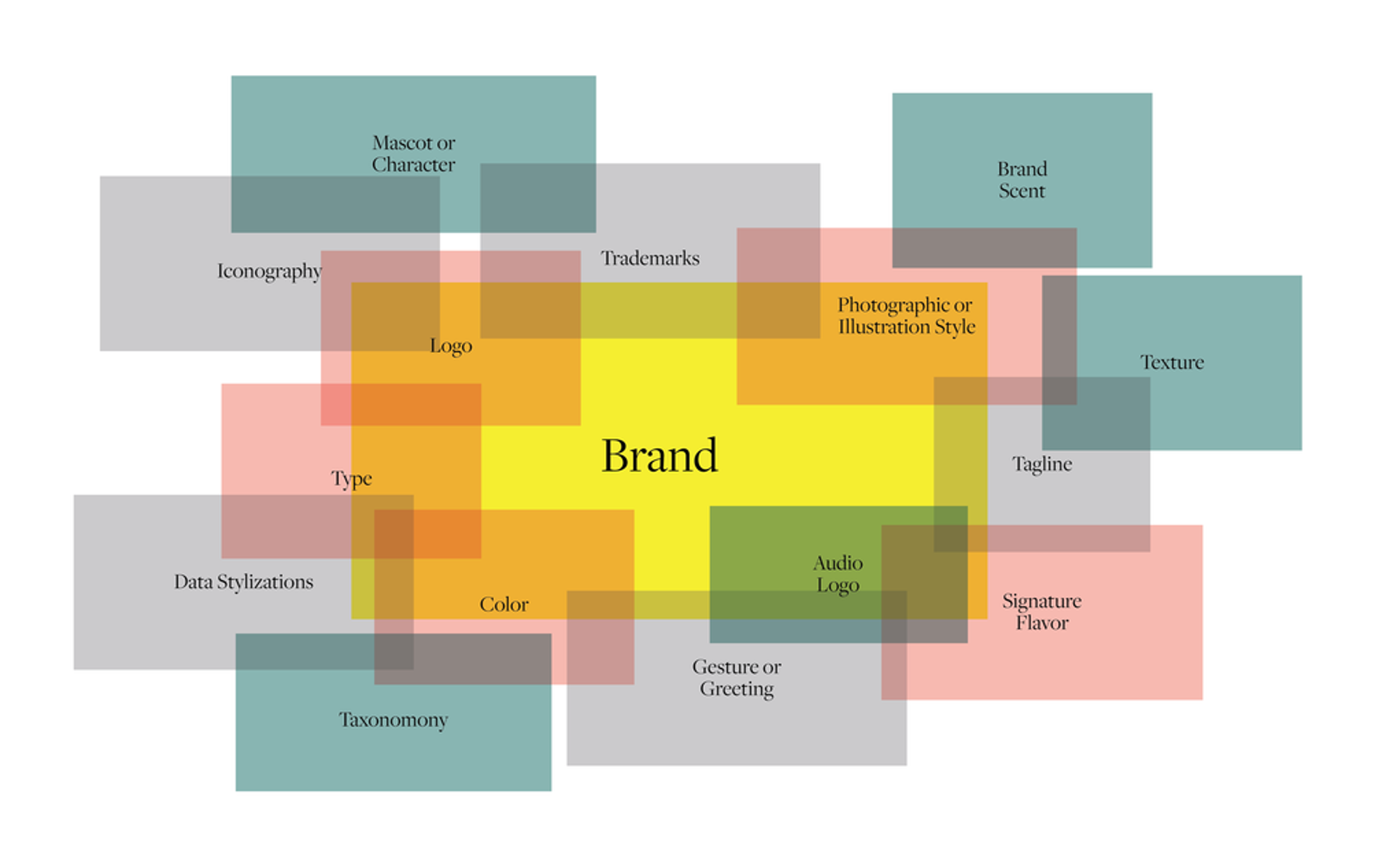An accurate appraisal of assets is a critical process of any merger or acquisition deal. Intangible assets are no exception. Taking stock of essential brand components will result in a more complete understanding the greater value of the merging brand. The process often highlights additional value pre-merger, showing where and how a brand can lead the way in marketplace communication through the merger. It can also identify where to best unlock value post-merger.
We’ve defined a short list of some of the essential brand components not to be overlooked in any deal. Understanding their purpose and value early in the process will help to retain and transfer existing equity and benefit to the resulting entity.
BRAND NAME
A brand name is the most tangible expression of an organization, product, or service. While not the only critical component, it will be used more often than any other. A name will be employed pre- and post-M&A to quickly communicate meaning, reputation, and expectations. It will be the lead in all press. It will have a significant impact on a logo, story, and all go-to-market assets. When someone asks an employee where they work or what they are working on, the name will often come first and be attached to everything that employee says next.
BRAND IDENTITY
A brand’s identity is comprised of a set of assets that symbolize all that the brand embodies to audiences. The identity speaks to the brand’s purpose, vision, and capabilities, as well as audience and industry perceptions and preferences. Identity components, when done well, are unique yet easily recognizable—especially when seen against the competitive set.
Yes, brand identity components are most often visual, however non-visual components are also part of brand identity. Examples of non-visual brand components can be audio logos such as those belonging to Intel, Netflix, and MGM’s lion roar, a brand sent, a certain taxonomy or way of speaking, an character, or a specific aspect of an experience.

BRAND APPLICATIONS
Brands are expressed across multiple applications throughout all communications both internal and external. Consistent interactions across a brand communication will reinforce the brand purpose as well as the idea, feeling, or association that is conjured when interacting with an organization. The website, presentations, templates, banners, advertisements, and any other collateral or designed experience are all examples of brand applications. These are opportunities to consistently communicate the kinds of experiences you want your internal and external stakeholders to have with the brand.
Any instance of brand interaction should be considered as a brand application, and an extension of the brand. In an M&A process, existing applications should be defined, cataloged, and considered for both their current efficacy and their role in the future state. Having a clear understanding of the application landscape before the M&A will help plan what needs to be addressed in the future and what needs to withstand any changes.
Organizations should engage with a design agency that specializes in brand identity to evaluate, strategize, and design the post-M&A brand. Expertise and outside perspective are critical to producing well-considered and designed components that meet market-ready standards and lead the way in critical marketplace communications.
About the Author
This content series is part of our ongoing partnership with is + at.
is + at is a strategic design house specializing in brand and product market readiness. By combining expertise, insight, and innovation, opportunities are identified in areas that are primed for success. is + at designs systems and realizes brands, messaging, and products into market-ready states, and builds the systems that support them to success.